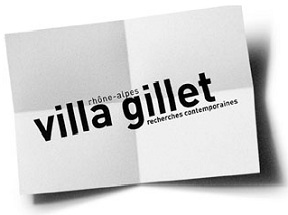Translation as Muse: Muse as Teacher

Mary Jo Bang is the author of six books of poems, including Louise in Love, The Bride of E, and Elegy, which received the National Book Critics Circle Award. She’s been awarded a Guggenheim Fellowship and a Hodder Fellowship from Princeton University. She’s currently a Professor of English at Washington University in St. Louis. Her translation of Dante's Inferno, with illustrations by Henrik Drescher, was published by Graywolf in 2012.
In 2012, researchers at Emory University published the results of a study where subjects whose brains had been wired to MRI machines were asked to read a list of metaphors based on texture—for example, a man’s “leathery hands,” a singer’s “velvet voice.” The scans showed clear evidence that the area of the sensory cortex that processes information about texture-based-on-touch was activated by reading these sensory-based metaphors. This was in marked contrast to when the subjects read descriptive phrases that did not involve texture—“strong hands,” “pleasant voice,” etcetera. In another study, done in France by Véronique Boulenger of the Laboratory of Language Dynamics, when subjects read sentences that described physical activity—“Pablo kicked the ball”— their motor cortexes not only lit up but the word “kicked” triggered activity in that part of the cortex dedicated to leg movement, whereas “John grasped the object” stimulated that part of the motor cortex specifically involved in arm activity.
How odd that our brains operate as if matter and imagination were equal. Since that’s the case, how can reading not add to one’s experience, and in turn influence a person’s writing? And wouldn’t translation especially affect the brain, since translation involves the closest sort of reading, one where the mind simultaneously reads for meaning and tries to access the equivalent word or expression in another language. Wouldn’t reading the word “pelle” in Italian similarly send a message to the brain to access the synaptic record of all past sensory experience having to do with leather: black jacket, kid gloves, car seat, red belt with an alligator buckle, toy-gun holster, shoe shop. Wouldn’t the experiential knowledge of how those various leathers felt be carried along as the translator toggled between two different linguistic systems? And of course each of those leather memories would be connected to other associational memories, some quite rich in subjectivity.
So, now to the question at hand: Does translation affect the translator’s creative work? How could it not, since reading prompts the brain to actuate stored memories that refresh our sense of the material world. It’s the same material world we tap into for our own writing. But there’s a second part to the question: is translation’s effect one that “nurtures” or one that “impedes”? I have to admit I was surprised the first time I was asked by an interviewer whether translating Dante had affected my own work. I said I wasn’t aware of any influence and quickly turned the question around to talk about why I might been drawn in the first place to translate the Inferno. I speculated that it was because the poem had a strong sense of narrative and I had always found narrative to be a useful poetic device—although, in my own poems, the narratives are less elaborate and usually only hinted at. Looking back, I can see that the question about the possible effect of the translation on my own work not only didn’t interest me at the time, it made me anxious. My impression was that I was devoting all of my time to the translation. My own writing was something that I expected I would return to once I had finished the translation but in that moment, I felt my own writing didn’t exist. So, how could the translation be influencing something I wasn’t doing?
It was several years latter, when I printed out the poems I had written over the years I had worked on the translation, that I saw that I had, in fact, been regularly writing poems—sometimes prompted by an invitation to publish, sometimes the result of language games I invented as a break from the translation. Without realizing it, while simultaneously translating Dante’s long poem, I had written an entire book of poems. And further, now that they were gathered together, I could see that many—almost all of them were, at least thematically, in dialogue with the Inferno. I see now that I had rather unwittingly been learning by Dante’s example about how better to use artifice.
What I most love about the Inferno is its brilliant complexity and the intelligence with which Dante invents the perfect punishment for each human error. The lustful, unable to contain the fire of carnal wanting on earth, suffer a rain of fire. The corrupt aldermen and other elected officials who were secretly “on the take” in a former life, now boil in a pit of tar; when they rise to the surface for a cool breath of air, they are forced to “take” a piece of a devil’s fork. There is a formal perfection too in the nine circles, each one smaller than the previous, each one farther from the godhead and that much closer to the loveless cold of frozen Lake Cocytus.
I’m also drawn to the sincerity of the character named Dante. I admire the way he never holds himself above the others but, like every other mortal, keeps tripping over his own shortcomings. It’s easy enough to deceive oneself that evil is always “the other,” but Dante the poet prevents Dante the character from that self-deception.
As a poet, the challenge is to invent strategies that allow you to speak about those things that seem most pressing. I can’t write the Inferno. But by writing over Dante’s poem, I think I understand something about why it feels so fully realized. Just as Dante invented a character called Dante, each time I write a poem, I invent a character that, even when she has my name, is never me. Had the poet named Dante limited the poem to the circumstances of his own life, he couldn’t have invented a nine-circle Hell inhabited by people he’d never met, characters from myth as well as real people culled from history. He couldn’t have had Virgil serve as a guide, except in the figurative sense. That the poet and the speaker are not one wasn’t new knowledge for me, but tracing over the Dante’s text for so long, has given me a better understanding of how this form of invention, a form that hinges on developing a sense of remove from one’s personal circumstances, works.
If I’d been asked the question of whether translation nurtures or impedes one’s own creative writing prior to this recent realization, I might have said that translation was impeding my writing because I was devoting so much time to the translation, and to the accompanying notes, which took over a year of steady work. The fact is, writers are not always aware of how much writing they are doing. I certainly wasn’t. And I wasn’t aware of how I was being influenced as I rewrote the poem, word-by-word, into English.
Cette ressource a été publiée dans le cadre de la cinquième saison du festival "Walls and Bridges", organisé par la Villa Gillet, qui s'est déroulé à New York du 9 au 18 octobre 2013.
Pour citer cette ressource :
Mary Jo Bang, Translation as Muse: Muse as Teacher, La Clé des Langues [en ligne], Lyon, ENS de LYON/DGESCO (ISSN 2107-7029), novembre 2013. Consulté le 16/01/2026. URL: https://cle.ens-lyon.fr/anglais/litterature/entretiens-et-textes-inedits/translation-as-muse-muse-as-teacher



 Activer le mode zen
Activer le mode zen


